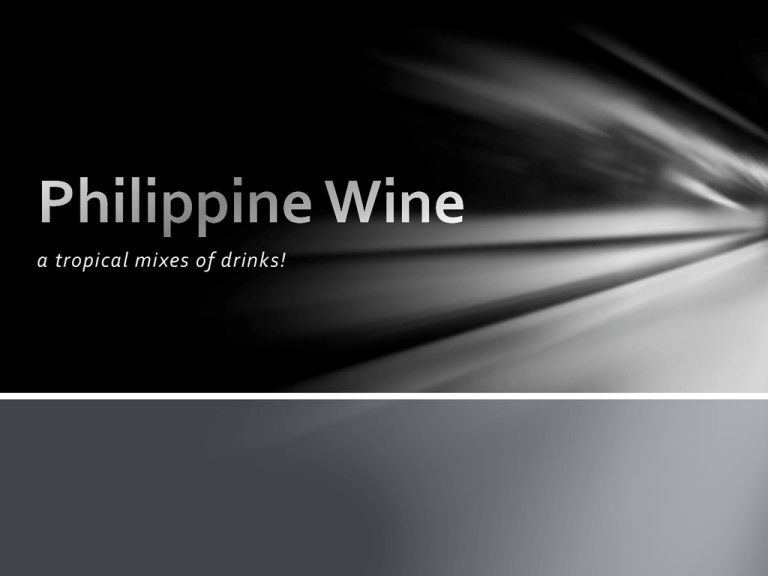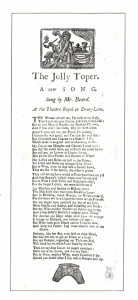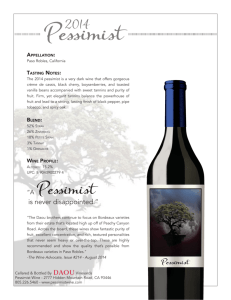a tropical mixes of drinks! Philippine Wine
advertisement

a tropical mixes of drinks! Origin and History For centuries, the Philippines has had its own tradition of brewing, fermenting and drinking wines which are produced in the different parts of the country. Every region has its unique and exotic line of alcoholic drinks & beverages and such concoction had been locally developed long before TUBA claimed to be the oldest recorded alcoholic drink in the Philippines. Processed and fermented from coconut sap. Senor Antonio Pigafetta together with Ferdinand Magelan noted that the Cebuanos or the natives of Cebu, delightfully offered them as welcome drink this coconut toddy contained in local jars. Lambanog Processed Tuba Tuba is further processed and distilled to come up with a potent clear liquor called lambanog 80% proof and above Sometimes a jug or glass jar of this liquor is added with raisins or some other ingredients and buried under the ground or under a running water in the river to come up with a much higher percentage of alcohol with a more distinct sweet taste. Tuba is produced in provinces where coconut is largely produced in Quezon and Laguna Tapuy (Rice Wine) Cordilleras claim that their Tapuy or Rice wine has also been existence long before Spanish Colonizers arrived in the country. Made from a nearly cooked red mountain rice Basi In the Ilocos Region the declaration of Wine Monopoly by the Spanish government during the Spanish era literally disturbed and deprived the native producers of a district wine called basi. brewed and fermented from sugar cane, a tall jointed, maizelike grass, together with glutinous rice and some botanical ingredients. This wine is brewed, fermented and aged for at least a year in glazed earthen clay jars called the Burnay. had been a Lucrative industry of the locale long before the coming of the Spaniards. Records would reveal that the natives or the Ilocanos would flocks in the place of Ciudad Fernandina, now known as the town of Vigan, to do export through the Galleon Trade where the wines are brought to Europe via Acapulco, Mexico. It was sometime in the year 1807 that the so-called Basi Revoltalso known as the Ambaristo Revolt which is named after its leader, took place in Ilocos, Don RobertosWine - The first Mango Wine in the world - -A pioneer among the new breed of Filipino wine makers the Wine maker of the Don Robertos Winery who invented a recipe employing a new process and technology in fruit wine making inspired by a secret fruit wine recipe which was handed down through generations by the Belgian founders of a religious order f Nuns in Baguio City . from the finest Mango-producing country of the world, the Philippines, comes the exotic, exquisite, smooth with the fine taste and the first of its kind Cavite -The Province of Cavite is now known as the coffee capital of the Philippines with nine (9) coffeeproducing towns. Excelsa coffee varieties are the most commonly grown in these towns. Don Robertosbrewed Coffee Wine, The first brewed Coffee Wine in the World Other wines and its’ origin The abundance of Cashew in the Province of Palawan paved the way to processing and fermenting such into a unique Cashew Wine. Likewise, the abundance of tomatoes in the Province of Cagayan de Oro in Mindanao led them to produce Tomato Wine With the abundance of strawberries and cherries in the Province of Benguet, particularly in Trinidad Valley and Baguio City, the natives had come up with their popular Strawberry Wine, and Cherry Wine. • In a quiet convent of a Belgian founded congregation of nuns who promote organically guavas and pomelos are fermented into Guava Wine and Pomelo Wine. • The Ilocos Region have their own fruit wine called Duhat Wine, which is extracted from duhat fruit. • Pineapple Wineand Banana Winesare also produced in some other places in the Philippines CallLayaw Filipinos likewise produce wines, spirits and liquors from other agricultural sources. They Ybanag of Cagayan processed and fermented cereal like grains of corn to come up with a corn spirit which they callLayaw. Don Ramon Bignay a tropical sweet wine, from Naga Camarines Sur. Bignay or Antidesma bunius is a sour edible fruit but often neglected because of its small size. The fruits come in bunches like grapes but this bignay has the size of a toy pellet gun bullet. The seeds are big in proportion to fruit size. The popular product for Bignay is wine Jam and juice can also be made out of bignay Added to dish as flavorings. Young leaves can be eaten together with rice. The bark contains a toxic alkaloid. The heavy fragrance of the flowers, especially the male, is very obnoxious to some individuals. The bark yields a strong fiber for rope and cordage.The timber is reddish and hard. If soaked in water, it becomes heavy and, according to Drury, “black as iron”. It has been experimentally pulped for making cardboard.The leaves are sudorific and employed in treating snakebite, in Asia. Tapuy Tapoy is similar to the rice wine of Japan called sake. • • This kind of wine is basically made by soaking raw glutinous rice in hot water for I hour. • Drain and steam for 25 minutes and then spread in a tray to let it cool for 2 hours. • The yeast and rice is then combined by hand until blended • The mixture is then transferred in a container covered tightly with a lid and stored in a dry place and allow to ferment for 1 month. • Separate the liquid from the remaining rice mixture. • The liquid is tapoy or rice wine and the residual is rice mash. This kind of wine is widely produce in the provinces of Cordilleras, specifically by the Ifugaos.. Production Process Lambanog This kind of wine is basically made by soaking raw glutinous The mixture is then transferred in a container covered tightly with a lid and stored in a dry place and allow to ferment for 1 month. rice in hot water for I hour. Drain and steam for 25 minutes and then spread in a tray to let it cool for 2 hours. The yeast and rice is then combined by hand until blended Separate the liquid from the remaining rice mixture. The liquid is tapoy or rice wine and the residual is rice mash. Fruits Can be transformed into wine through a process called fermentation. Choice of fruit varieties. All it takes is heating to bring about Grape is not the only fruit which we can make good-quality wine. the chemical reaction plus other Natives fruits such as ingredients. -cashew(kasoy) -duhat -pineapple - guava PRODUCTION PROCESS The fruits should be sweet enough; otherwise, add cane sugar to the ingredients. Make sure the fruits are ripe and free from bruises and diseases. Wash the fruit very well and peel if necessary. Crush or mash to extract the juice. Use a fruit press or crush by hand and then strain the juice through a strong piece of cheesecloth. Add water twice the month of the extracted juice, then add sugar if necessary.





